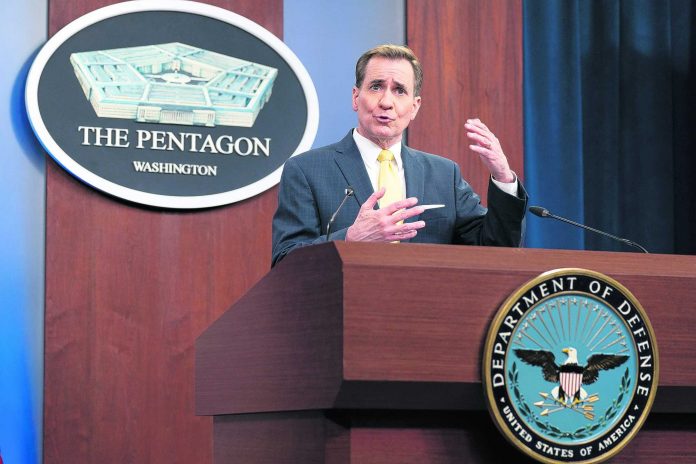
By LOLITA C. BALDOR
Associated Press
WASHINGTON (AP) — The U.S. military needs to adjust its planning, training, targeting and use of weapons in order to better avoid widespread civilian deaths and damage such as the devastating 2017 battle to liberate the Syrian city of Raqqa from Islamic State militants, a new RAND report said Thursday.
The report requested by the Pentagon reflects criticism of the military’s airstrike campaign that, according to some estimates, killed more than 1,600 civilians in Raqqa, as the U.S.-led coalition worked to destroy the Islamic State caliphate that wrested control of large swaths of Iraq and Syria.
Pentagon press secretary John Kirby said the report, which lays out a series of recommendations to improve military procedures and strategy, will be used as the department develops its own broader plan to reduce civlian harm.
“No other military works as hard as we do to mitigate civilian harm, and yet we still cause it,” said Kirby. “We’re going to continue to try to learn from past issues.”
RAND concluded that the battle for Raqqa provided important lessons.
Michael McNerney, lead author of the RAND report, called Raqqa “a cautionary tale about civilian harm in urban combat.” He said it “should serve as an extra incentive to the DoD to strengthen its policies and procedures to mitigate, document and respond to civilian harm.”
The RAND report noted that there has been a wide range of estimated civilian casualties during the seige, but also said it believes that 60%-80% of Raqqa was left uninhabitable by the time the city was liberated in October 2017.
Initially the U.S.-led coalition estimted that it was responsible for 38 incidents involving 240 civilian casualties — including 178 who were killed. A consortium of local Syrian and international groups, including Amnesty International and Airwars, put the number of casualties at a “high estimate” of 1,600, but said that about 774 of them could specifically be “verified” by data as the result of coalition action.
The report makes it clear that several thousand more civilians likely died, based on the number of bodies uncovered by U.S.-backed Syrian Democratic Forces, but many were probably killed by IS or other fighters on the ground.
“Our report focuses on U.S. actions in Raqqa, but the actions of the Syrian government and its Russian and Iranian partners undoubtedly contributed far more to civilian harm and suffering in Syria overall,” McNerney said.
The report noted that the challenges in Raqqa were compounded by limits on the number U.S. troops that could be there, as well as where they could be positioned. U.S. troops on the ground could have provided better targeting and civilian information, including on Islamic State militants’ efforts to use civilians as human shields, the report said.
RAND recommended that the U.S. military provide more extensive training and guidance on the need to avoid civilian harm, and plan and execute operations in ways to achieve those goals. Changes could include improved planning, better assessments of potential collateral damage, increased mission rehearsals, improved intelligence gathering, and more selective use of air strikes and munitions that minimize bomb fragmentation.



















